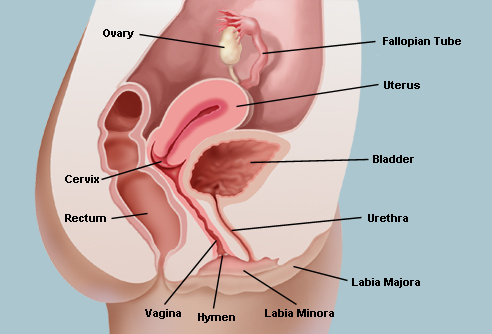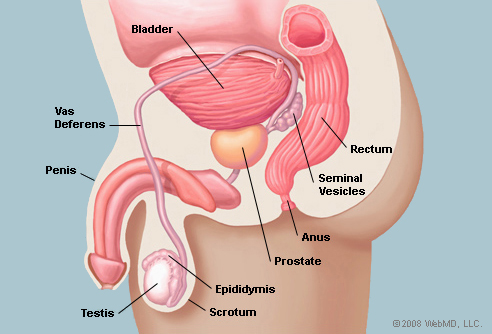REPRODUCTIVE ANATOMY AND PHYSIOLOGY
These include the vulva, labia, clitoris, urethra and hymen.
Vulva: This is the area of soft skin between a female’s legs. It covers the clitoris, opening to the vagina, opening to the urethra and the labia.
Labia: The labia are two sets of soft folds of skin inside the vulva. They are the majora and minora, also called outer and inner lips. The labia cover the inner parts of the vulva and are sensitive to touch.
Clitoris: This is a small organ at the top of the labia that when touched makes you feel shivery and excited. This is a sexual feeling. The clitoris grows to the size of a pea during puberty and may or may not be covered by a little flap of skin.
Hymen: The hymen is a thin piece of skin covering the vaginal opening. It only partially covers the vaginal opening.
These include the vagina, uterus, cervix, ovaries and fallopian tubes.
Vagina: The vagina is the passageway from the uterus to the outside of the female body. It is small, but stretches during sexual intercourse so a penis can fit inside, and expands during birth so a baby can travel through.
Uterus: Usually called the womb, it is normally about the same size and shape of an upside-down pear. It is where a fertilised egg or ovum implants itself and starts developing into a baby Every month, the lining of the uterus thickens to prepare itself for pregnancy, but when the girl does not become pregnant, the egg disintegrates, the lining breaks down and passes out of the vagina together with the blood. This bleeding is called menstruation.
Cervix: The cervix is a small opening located in the lower part of the uterus. It is a canal, which connects the uterus to the top of the vagina. This opening stretches wide when it is time for a baby to be born.
Ovaries: There are two ovaries (one on each side of the uterus), which are about the size of large strawberries. The ovaries contain a girl’s sex cells called eggs or ova.
Fallopian Tubes: A road (tube) through which an egg travels on its way to the uterus. It is about 12 centimeters long and as thin as a strand of spaghetti. There are two of them. One end of each tube almost touches an ovary and this is connected to the uterus.
A male’s outer sex organs are the penis, scrotum and testicles. They hang between the legs and can be seen when a boy is naked.
Penis: The penis is made of soft, spongy tissue and blood vessels. Urine leaves a male’s body through a small opening at the tip of his penis. Generally, the penis is soft and hangs down over the scrotum. Sometimes when the penis is touched or rubbed, it becomes stiff and hard, and larger and longer, and stands out from the body. This is called erection or to “have a hard-on.”
Scrotum: The scrotum is a bag of wrinkled-looking skin that hangs outside a male’s body and protects the testicles.
Testicles: Males have two testicles (or testes) that hang outside their bodies. They are firm and oval-shaped organs that grow to the size of a very small ball during puberty. That’s why they are also called balls. Usually, one testicle hangs lower than the other to prevent them from crushing each other when moving the legs during any physical activity.
These are the epididymis, vas deferens, seminal vesicles and prostate gland, and urethra.
Epididymis: The epididymis are long tubes tightly coiled around the back of each penis. Sperm mature in and travel through the epididymis on their way to the vas deferens.
Vas Deferens: The two vas deferens are each about a foot and half long. Each of these long, narrow, flexible and fairly straight tubes starts at the epididymis and winds all the way to the urethra.
Seminal Vesicles and Prostate Gland: The two seminal vesicles and prostate gland produce fluids that combine with the sperm to form the semen. The fluid produced by the seminal vesicles gives sperm the energy to travel during ejaculation, while prostate gland helps to squeeze the semen through the urethra during ejaculation.
Urethra: The urethra is a long, narrow tube that carries urine from the bladder, where it is stored, to the penis and out through the opening at its tip. It is also the passageway through which semen leaves the male body.




